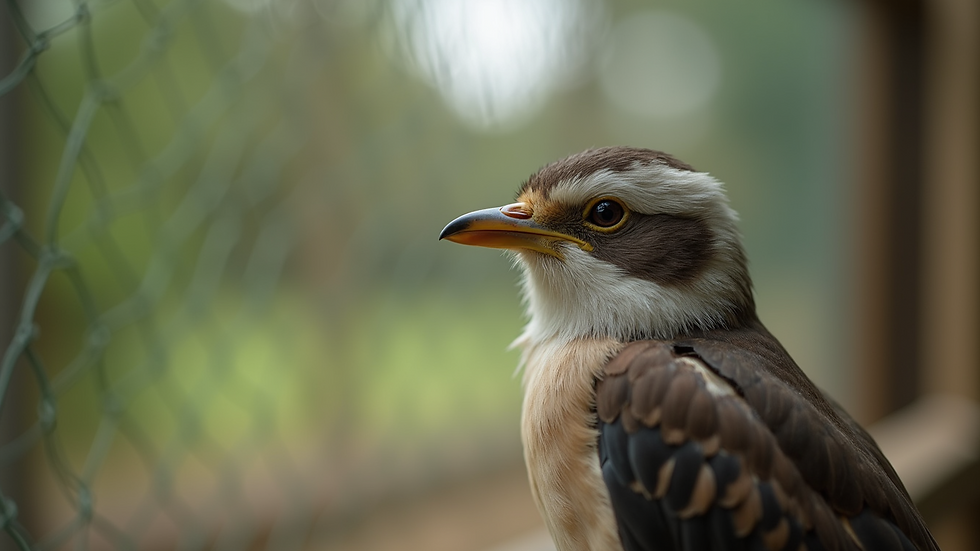Wildlife Conservation Activities: Why They Matter
- Esperance Wildlife Sanctuary Inc.

- Aug 27
- 4 min read
The preservation of our natural world is a responsibility that cannot be overstated. As I reflect on the importance of conserving natural habitats, I am reminded of the delicate balance that sustains life on Earth. The survival of countless species depends on the health of their environments, and it is through dedicated efforts that we can ensure these ecosystems thrive. The role of wildlife conservation is pivotal in this endeavour, as it not only protects animals but also maintains the integrity of the habitats they call home.
The Importance of Conserving Natural Habitats
Natural habitats are the foundation of biodiversity. They provide shelter, food, and breeding grounds for wildlife. When these habitats are destroyed or degraded, the species that depend on them face severe threats, including extinction. Conserving natural habitats is essential for maintaining ecological balance and supporting the myriad forms of life that inhabit our planet.
For example, the coastal heathlands and woodlands of the Esperance-Goldfields region are home to unique flora and fauna found nowhere else. Protecting these areas ensures that native species such as the western quoll and the malleefowl continue to survive. Moreover, healthy habitats contribute to ecosystem services that benefit humans, such as clean air, water filtration, and climate regulation.
Efforts to conserve natural habitats often involve restoring degraded areas, controlling invasive species, and implementing sustainable land management practices. These actions help to rebuild ecosystems and create safe havens for wildlife. Without such measures, the loss of habitat would accelerate, leading to irreversible damage.

The Role of Wildlife Conservation Activities in Ecosystem Preservation
Engaging in wildlife conservation activities is a critical step toward safeguarding biodiversity. These activities encompass a range of initiatives, from rescuing injured animals to habitat restoration projects. Each action contributes to the broader goal of sustaining wildlife populations and their environments.
One notable example is the rescue and rehabilitation of native animals affected by habitat loss or human interference. Wildlife sanctuaries play a vital role in this process by providing medical care and safe spaces for recovery. Once rehabilitated, animals are often released back into protected habitats, where they can thrive.
In addition to direct animal care, conservation efforts include monitoring species populations and conducting research to inform management strategies. This scientific approach ensures that interventions are effective and adaptive to changing conditions.
Community involvement is another cornerstone of successful conservation. Local residents and volunteers often participate in activities such as tree planting, weed removal, and educational programs. These collective efforts foster a sense of stewardship and raise awareness about the importance of protecting natural habitats.

What can I do to help wildlife conservation?
Contributing to wildlife conservation may seem daunting, but there are practical steps anyone can take to make a difference. I have found that even small actions, when multiplied across communities, can have a significant impact.
Support Local Conservation Groups
Joining or donating to organisations like the Esperance Wildlife Sanctuary Inc. helps fund vital rescue and habitat restoration projects. These groups rely on community support to continue their work.
Participate in Habitat Restoration
Volunteering for tree planting days or invasive species removal helps restore natural environments. These activities improve habitat quality and increase biodiversity.
Practice Responsible Land Use
If you own land, consider maintaining native vegetation and avoiding harmful chemicals. Creating wildlife-friendly spaces encourages native species to flourish.
Educate Yourself and Others
Learning about local wildlife and sharing knowledge promotes conservation awareness. Schools, community groups, and social media are excellent platforms for spreading the message.
Reduce Your Environmental Footprint
Simple lifestyle changes, such as reducing waste, conserving water, and supporting sustainable products, contribute to healthier ecosystems.
By engaging in these actions, individuals become active participants in the preservation of natural habitats and the protection of wildlife.

The Broader Impact of Conservation on Biodiversity and Climate
The benefits of conserving natural habitats extend beyond the immediate protection of wildlife. Healthy ecosystems play a crucial role in mitigating climate change by sequestering carbon and regulating local weather patterns. Forests, wetlands, and grasslands act as natural buffers against extreme weather events, reducing the impact on human communities.
Biodiversity itself is a source of resilience. Diverse ecosystems are better equipped to adapt to environmental changes and recover from disturbances. This resilience is vital in the face of global challenges such as habitat fragmentation and climate variability.
Furthermore, conserving natural habitats supports cultural and economic values. Many indigenous communities have deep connections to the land and its species. Protecting these areas preserves traditional knowledge and practices. Additionally, ecotourism based on wildlife and natural landscapes can provide sustainable income for local economies.
The interconnectedness of these factors highlights why conservation must be a priority. It is not merely about saving individual species but about maintaining the complex web of life that sustains us all.
Moving Forward: Sustaining Efforts for Future Generations
Looking ahead, the continuation and expansion of conservation efforts are imperative. This requires collaboration among governments, non-profit organisations, scientists, and communities. Policies that protect habitats and regulate land use must be enforced and enhanced.
Investment in education and capacity building will empower more people to participate in conservation. Innovative approaches, such as citizen science and technology-driven monitoring, can improve the effectiveness of interventions.
Ultimately, the goal is to create a legacy of thriving natural habitats and abundant wildlife. By committing to this vision, we ensure that future generations inherit a world rich in biodiversity and natural beauty.
The work of organisations like Esperance Wildlife Sanctuary Inc. exemplifies this commitment. Their focus on rescuing native animals and restoring habitats in the Esperance-Goldfields area sets a standard for conservation excellence.
In embracing these efforts, we contribute to a sustainable future where wildlife and humans coexist in harmony.





Comments